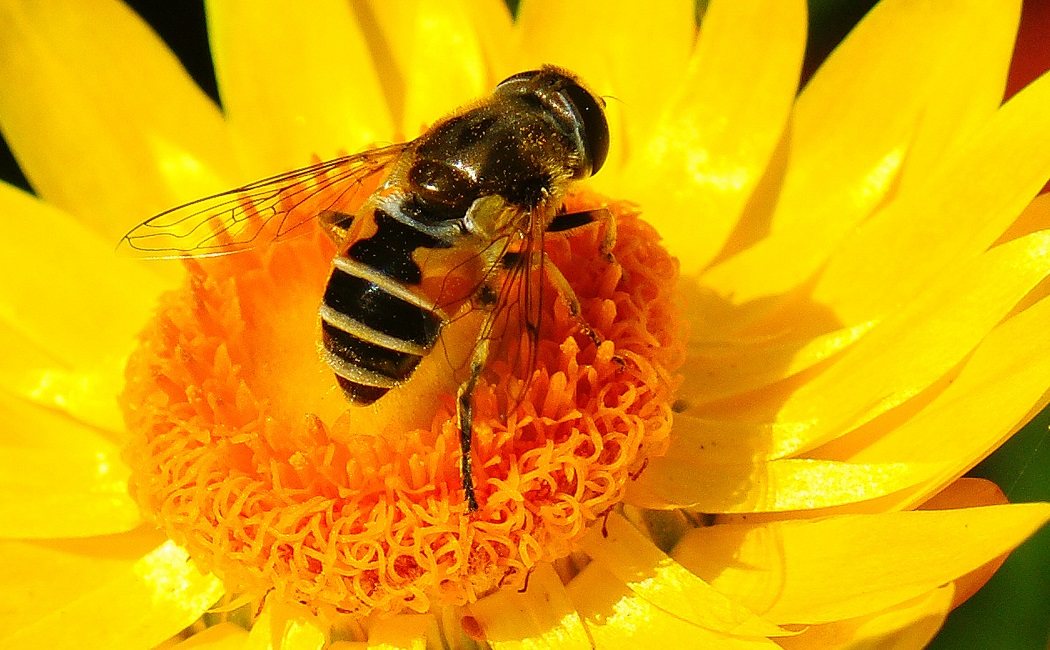Hay fever is caused by a response to indoor or outdoor allergens, such as pollen or dust mites.
Hay fever Also known as seasonal allergic rhinitis or pollinator disease., is conjunctivitis caused by allergic reactions to outdoor or indoor allergens such as pollen, but also dust mites or saliva. and small skin spots It appears in dogs, cats and other animals with fur or hair and in different seasons such as spring, summer or fall. Pollen floats in the air and enters the nasal passages when breathing. It causes people who are allergic to histamine, which is a chemical that causes a runny nose. Red or watery eyes, itching, sneezing, stuffy nose, or hay fever
Hay fever is caused by pollen coming into contact with the air. But this does not mean that all plants can be pollinated through the air, for example. Some plants do not cause allergic reactions.Examples of plants that are not pollinated by insects and cause allergic reactions include: grassThe most relevant causes of pollination in Spain and almost all over the world. olivein the northern, southern and eastern regions of Spain and Judaicason Parietariain the Mediterranean coastal region
cause
When you have hay fever Your immune system identifies harmless substances in the air as dangerous. Therefore, it creates antibodies against that substance.Therefore, the next time you come into contact with that substance Antibodies signal the immune system to release chemicals into the bloodstream. This causes the reaction that causes the signs and symptoms of hay fever.
Allergic rhinitis has been one of the most common immune disorders in humans since then. About 20 percent of the population has a reaction to pollen.About 10 percent also have clinical symptoms. and approximately 5 percent received treatment. It is curious because at first this kind of fever was considered a very rare and peculiar pathology.
It’s true that pollution that causes inflammation of the nasal mucosa can help the disease appear in more people. It also helps absorb pollen antigens. Perhaps this explains why in this city The frequency of hay fever is therefore twice as high in rural areas. This is despite much more exposure to pollen.
symptom
Hay fever causes symptoms that are different from other types of rhinitis. These effects can last indefinitely.But the severity of the disease can vary from year to year. Depending on the amount of pollen released and the affected person’s exposure to the pollen season, after age 50 or 60, symptoms may gradually disappear.
at Hay fever symptoms is:
- Headache, irritability and fatigue
- Sneezing, which can recur throughout the day and may occur 20 or more times in a row
- Itchy nose, sometimes severe
- Runny or runny nose Sometimes it’s a lot
- The sense of smell is slightly weakened.
- Red eyes, which tend to be itchy and watery
- Allergic to black eyes such as blue, swollen skin under the eyes
- Sore throat, stuffy ears and cough
Protection
The most effective way to avoid suffering from this type of allergy is During the season there is more pollen spreading. People with allergies should stay away from these areas and spend as much time in air-conditioned indoor areas as possible. It is recommended to reduce outdoor time in areas with a high pollen index..
Daily and seasonal factors
The signs and symptoms of hay fever can vary depending on the amount of pollen and mold present throughout the day.For example, the highest grass rates occur in the late afternoon and early evening. Ambrosia flowers during the day and mold during windy, dry, warm afternoons, as well as in the early morning and when there is increased humidity and rain.
however, These signs and symptoms can begin or worsen at any time of the year. Therefore, it varies from season to season. Tree pollen: Most common in early spring. Ragweed pollen in fall. Grass pollen is common in late spring and summer. Additionally, indoor allergy symptoms can be worse in winter because the home is closed. Traces of mold and mildew, both internal and external, are considered perennial and seasonal.
 Diagnosis of rhinitis must be given by a specialist.
Diagnosis of rhinitis must be given by a specialist.Diagnosis
The diagnosis of rhinitis must be made by a specialist. This will examine the nasal passages to see if they are runny and discolored. There is also the option of examining secretions under a microscope. Paranasal sinus x-ray and computed axial tomography to confirm sinusitis. This is because it can sometimes occur with hay fever and must be treated at the same time. In addition to sinusitis There are still other problems. That is also related to hay fever. For example, poor sleep, worsening asthma, ear infections, or decreased quality of life.
treatment
According to experts Treatments that are usually given to end hay fever are:
- Antihistamines : This is usually a nasal spray. oral solution or pills that do not require a prescription May cause drowsiness.
- nasal corticosteroids : Considered the most effective treatment. It is a nasal spray and can be purchased without a prescription from a doctor. The proper use of these aerosols to be effective is to use them continuously for a short period of time.
- allergy vaccine : Usually used when the case of pollination is more severe. It consists of injecting the pollen that causes the allergic reaction and then increasing the dosage until symptoms are controlled. Therefore, the body can adapt to pollen until it can tolerate and resist it.
- Medicine to relieve nasal congestion : In addition to treating hay fever, it also helps relieve nasal congestion. This method is used for no more than three days.

